Prince of Naples Sauce
"I have always thought of sophistication as rather a feeble substitute for decadence." - Christopher Hampton, British playwright
The first Prince of Naples was Giuseppe Carlo Gennaro, son of King Ferdinand IV of Naples and his Austrian “consort”, Maria Carolina. He lived for 20 months before dying of smallpox. Somehow, Napoleon’s brother, Joseph Bonaparte, got involved, and created the hereditary position of Prince of Naples, which continued to be passed down until the death of the latest one, wait for it…
Vittorio Emanuele Alberto Carlo Teodoro Umberto Bonifacio Amedeo Damiano Bernardino Gennaro Maria di Savoia, who held the title from 1937 until just last year, when he passed away in February. He lived most of his life in exile, some of the time in prison, and was generally just… not a good dude. I am not quite sure why, maybe because of his disrepute, but his son… Emanuele Filiberto Umberto Reza Ciro René Maria di Savoia… born in 1972, did not inherit the title and is, instead, Prince of Venice.
None of this, as best I know, has anything to do with the sauce called Prince of Naples, or, here in Argentina, principe de napoli. Now, pasta with this sauce, while not necessarily common here, shows up particularly on old school Italian menus, with various claims to grandmotherly origins, ranging from Calabria to Campania (seems most likely, given… Naples) to, yes, Venice. At its core, it is a creamy sauce with ham and mushrooms, but its execution is so varied beyond that base, that it’s near impossible to nail down.
There is a common Italian childhood dish, the sort of thing a busy parent might throw together for the family when cooking time is limited, of pasta con prosciutto e panna, which is little more than chopped lunchmeat style ham (monikered, in full, as prosciutto cotto, cooked ham, versus the cured type) in a cream and mozzarella sauce (see my notes about the difference between panna di latte, what we think of as cream, and panna di cucina, or kitchen cream, which is a homemade or prepackaged blend of oil and milk). And there is pasta al baffo, which is the same with tomato sauce blended in.
In other places, like NYC, it showed up on a menu at Peppolini’s II, back in the 80s, as a sauce of tomato fillets, diced onion, mozzarella and parmesan, tossed with spaghetti.
Those differences, and more, carry over here in Argentina. The “authentic” recipe for the dish varies from bechamel to cream to cornstarch thickened milk as the sauce; with or without tomato sauce, extract, or dice; whether or not to add peas; whether it contains onion and/or garlic; what sort of cheese to use; whether or not eggs are added; whether or not to gratin it under a layer of parmesan, occasionally someone will suggest using prosciutto or panceta, and probably some things I’ve missed.
I first encountered the dish here in mid-2009, at a long gone spot called Lo de Roldán where it consisted of “vegetable filled canneloni topped with the aforementioned sauce – bechamel with diced ham, fresh mushrooms and peas, and then with a quivering, just barely set egg atop”. A better version (in grand part because it was browned) was found a few months later at the likewise long gone La Momma Rosa, where it was fussili in a creamy, cheesy, ham and mushroom rosa sauce, gratineed in the oven with an egg embedded.
It’s a dish I almost never order - it’s way too rich for I generally want to eat - it’s kind of a heart attack waiting to happen. And, it always comes as a whole baking dish of pasta. It’s one for family style dining.
Now, when it comes to making it, which way should I go? Among the various “experts” in town at some of our old school Italian spots, we have OPINIONS.
”Bucatini with flour and milk boiled together, add ham, mushrooms, and mozzarella, gratinee with parmesan.”
“Mostacholes or tirabuzones with a can of pear tomatoes, a carrot, an onion, cooked ham, and a buttery cheese, or port salut, topped with grated cheese.”
“Fussili with ixed bechamel and tomato sauce, ham, mozzarella, chicken, and a fried egg on top.”
“Spaghetti or tagliatelle with two sauces, a bechamel with ham and peas, and a tuco or pomarola, grated cheese, and gratineed.”
So, over time, I’ve come up with my own version, and I’m swearing by it.
Let’s look at all the ingredients we have here! Quartered mushrooms, diced cuartirolo cheese (melts like mozzarella, but has a nice sharpness to it that I like), a wedge of parmesan or something similar (I didn’t use the whole wedge), peas, diced ham (not supermarket lunchmeat type, a nice thick slice from a deli ham), a beef stock cube - you could also use chicken or vegetable, or premade stock, or a couple of spoonfuls of demiglace - I use this as a little umami bomb that will dissolve into the sauce, about a cup of pureed tomato, 3/4 cup each of milk and cream (or just use a cup and a half of half-and-half), a chopped shallot, about a quarter cup each of butter and flour, and about half a kilo, a little over a pound, of fresh fussili. If you’re using dried, use about half a pound or a touch more.
Sauté the shallot in a good “glug” of olive oil with just a pinch of salt until soft and translucent.
Add the mushrooms, another pinch of salt, and sauté until they’ve given up their water and started to brown.
Add the ham and cook until it starts to brown. Remove all this to a bowl and set aside. If you’re using dry pasta, this is a good moment to drop it into the boiling salted water.
In the same pan, add the butter and flour, and cook, stirring regularly and scraping in the crispy bits left in the pan, over low heat, until it starts to color a light tan. We’re trying to cook out that raw floury taste that remains if you make a bechamel, as several of the recipes online suggested, by mixing the flour with the milk and adding that to hot butter.
Add the milk and cream (room temperature or cold, never hot, which will cause lumps), stir continuously. At the same time, if you’re using fresh pasta, this is the moment to put it in the water.
In short order, you will have a bechamel style base. Note we haven’t really seasoned this other than the bits stuck in the pan.
Add the pureed tomato, the crumbled up beef stock cube, and a ladle of the pasta water. If you’re using premade stock, don’t add the pasta water.
In mere moments you’ll have a lovely salsa rosa, pink sauce.
Add the reserved mix of ham and mushrooms, plus the peas (I was using frozen peas, which are par-cooked, if you’re using fresh peas, I’d boil them separately until they’re ready to use).
Add your pasta and cook in the sauce for about two minutes. If need be, if it’s getting really thick, add a little pasta water. Season to taste with salt and pepper.
Off the heat, add in the cubed cheese, mix it in, let it sit for a couple of minutes to melt.
Then mix it in. Are we done? No, we’re not!
Put it in one large baking dish or several smaller ones. For me, one of these was two portions, but for my two friends who enjoyed the dish with me, they ate their whole dish in one sitting.
Cover generously with grated cheese. You can leave these now until you’re ready to serve dinner. I made these in the early evening, about an hour before my friends were coming over, and then preheated the oven/broiler a little before they arrived.
And, pop into the oven to get all bubbly and brown (see the video at the top of the page). Easier to put the baking dishes on a sheet tray to put in and take out of the oven.
And… eat.
There are two common variations worth mentioning. They’re not different enough to warrant separate posts.
Salsa Parisienne - cream based bechamel, no milk, adds chicken to the mix along with the ham, and uses gruyere or a similar cheese in place of the mozzarella. Also generally not gratineed, though sometimes yes.
Salsa Caruso - A hard one to pin down. Ostensibly Uruguayan in origin, and then off to NYC in the 1920s when Enrique Caruso supported a dozen Napolitano chefs in opening restaurants there. Chicken livers sub in for the ham, diced roasted bell peppers are added instead of peas, a bay leaf is added to the mix, no mozzarella at the end, just grated parmesan over the top.


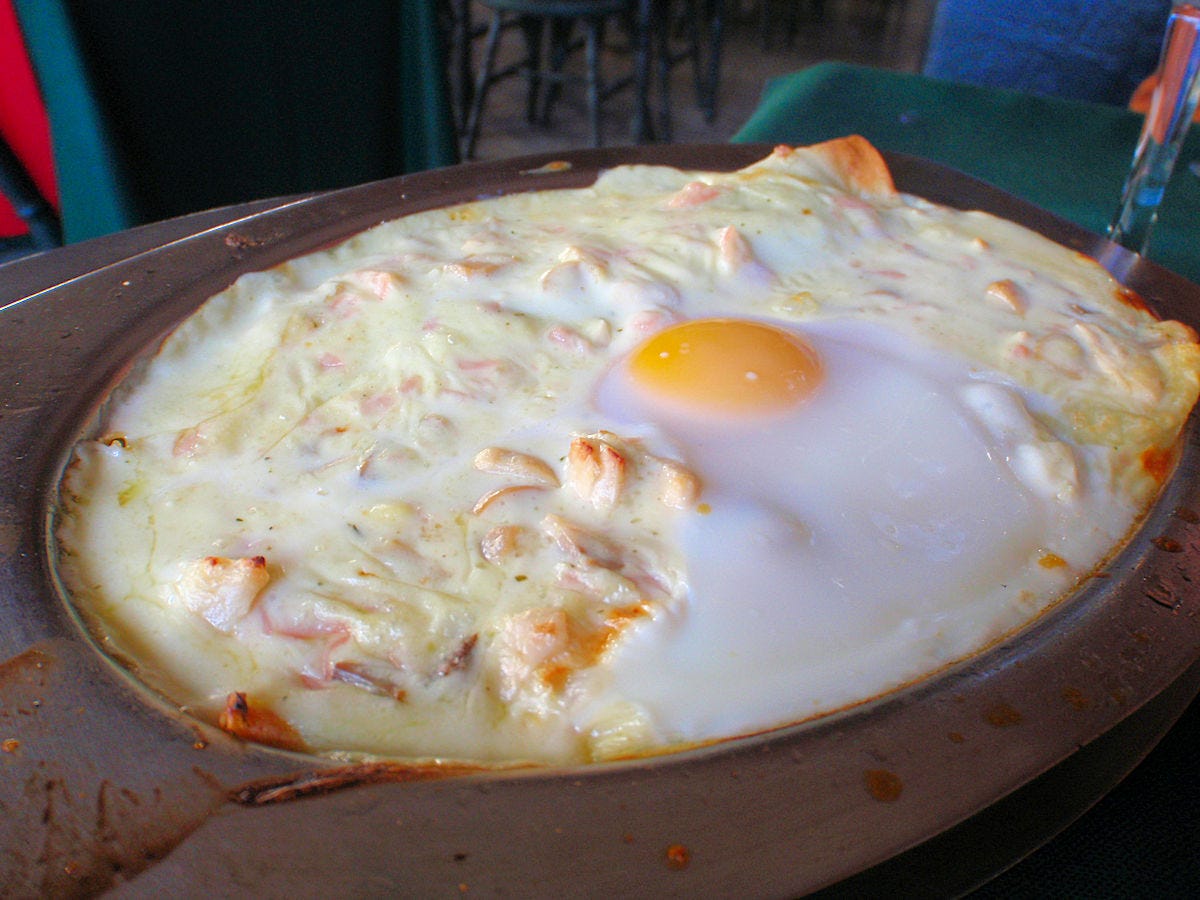
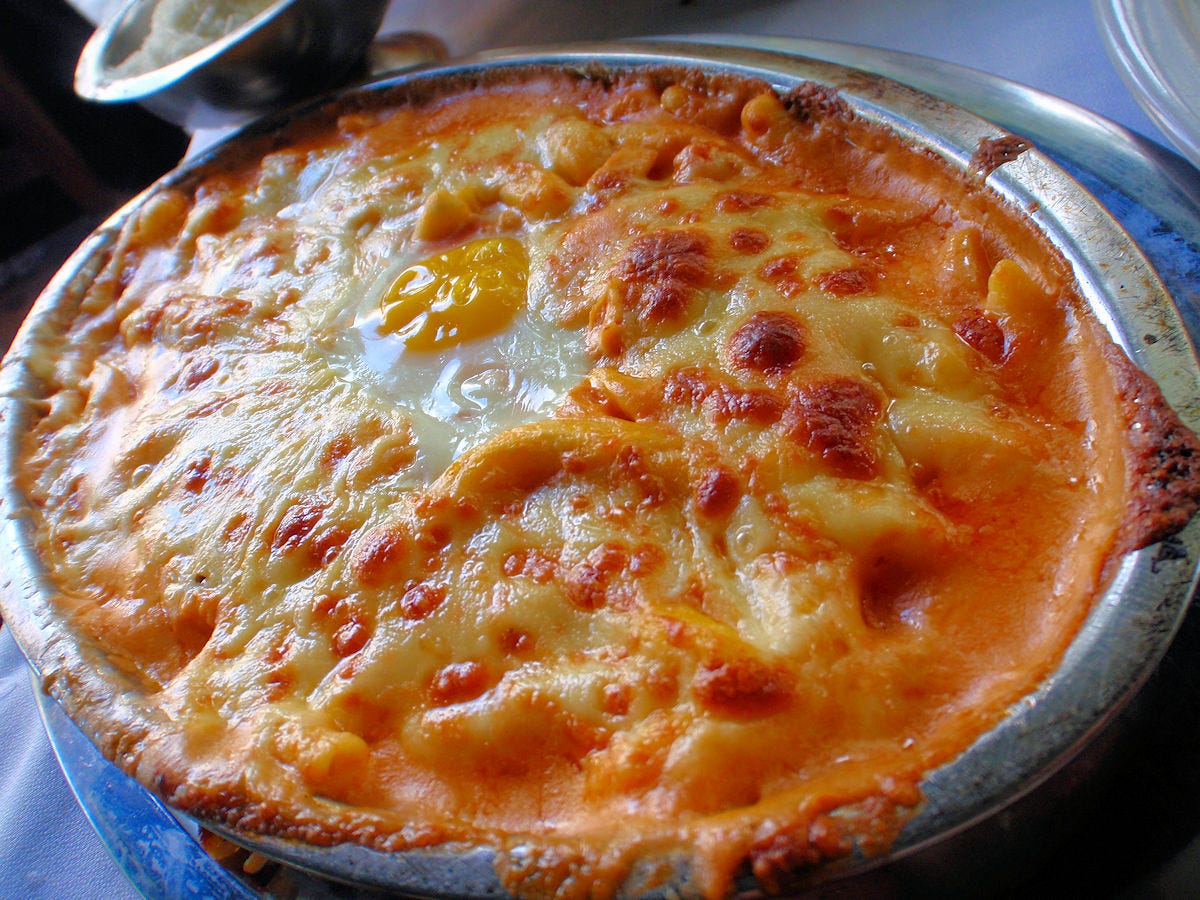
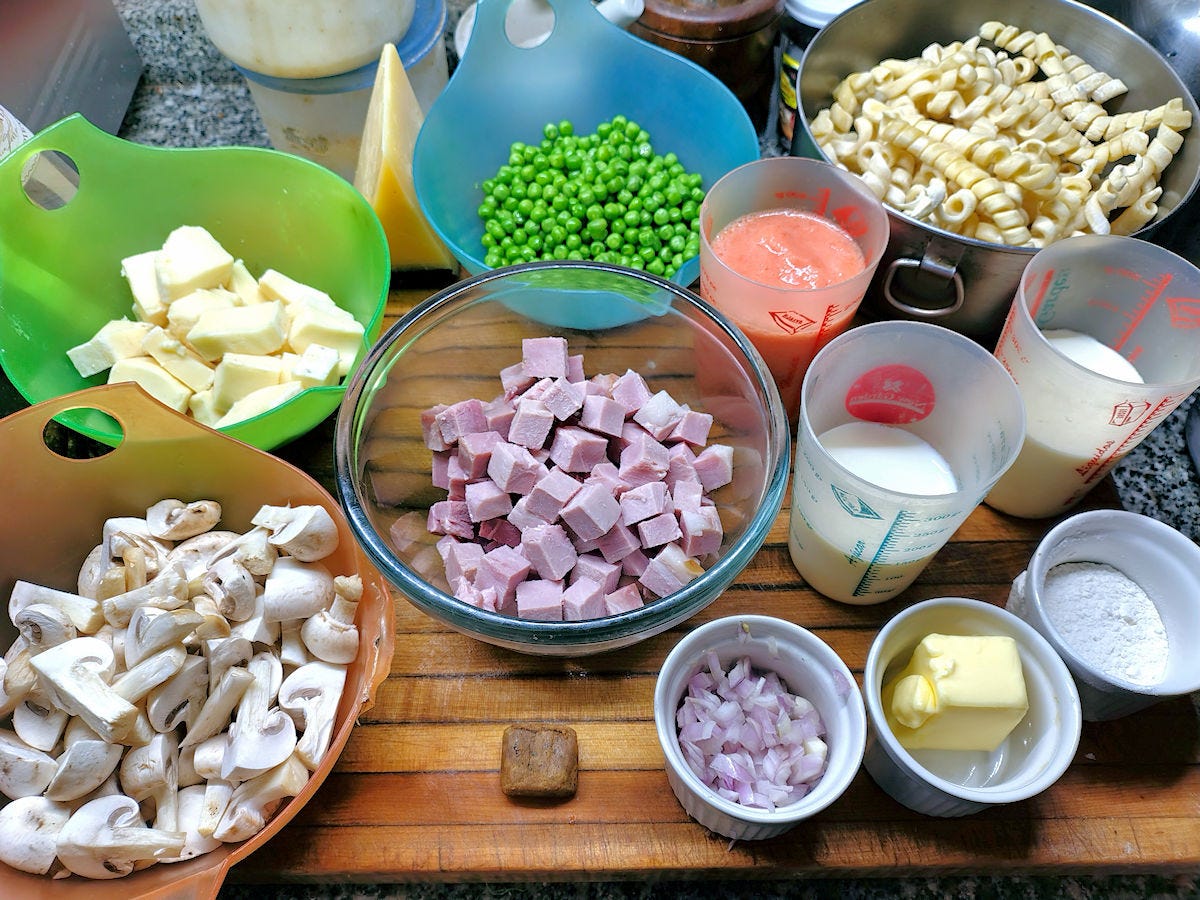
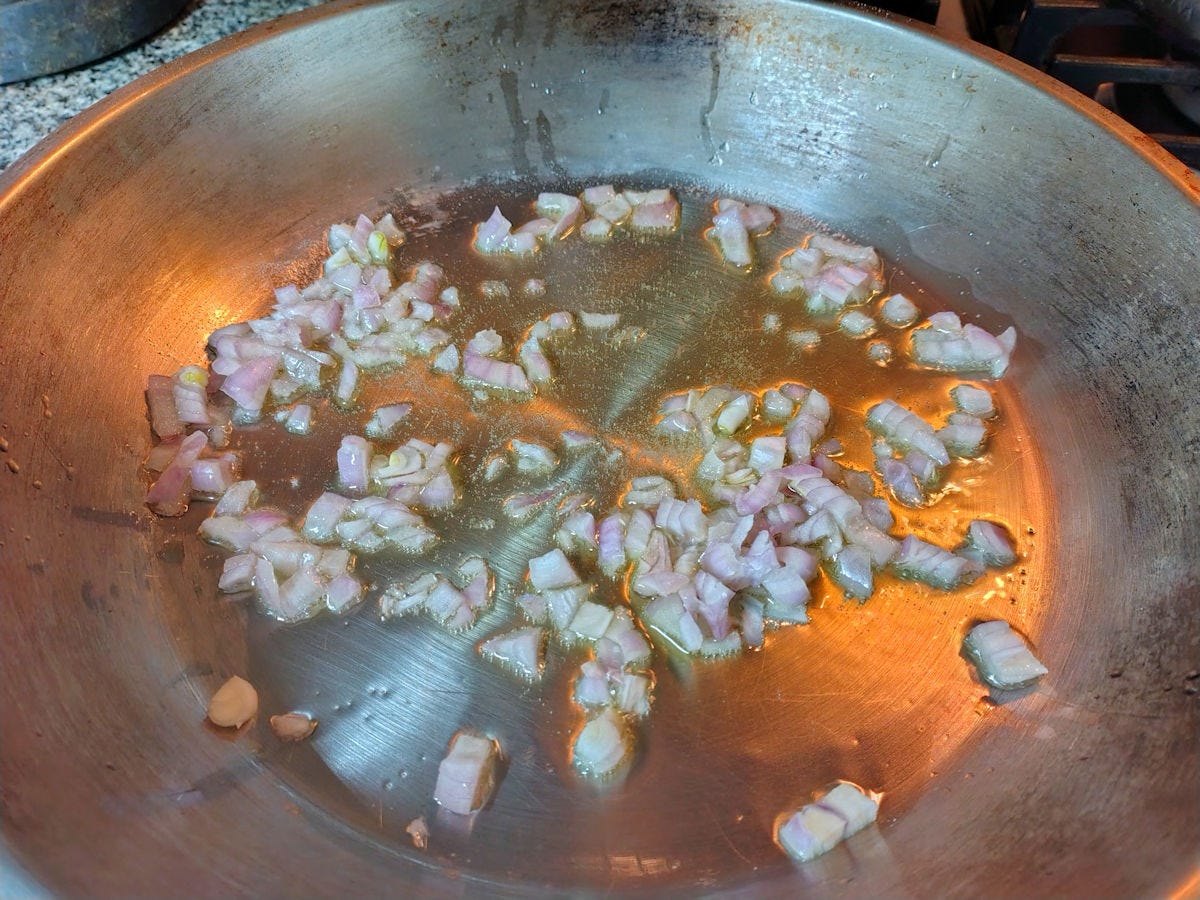
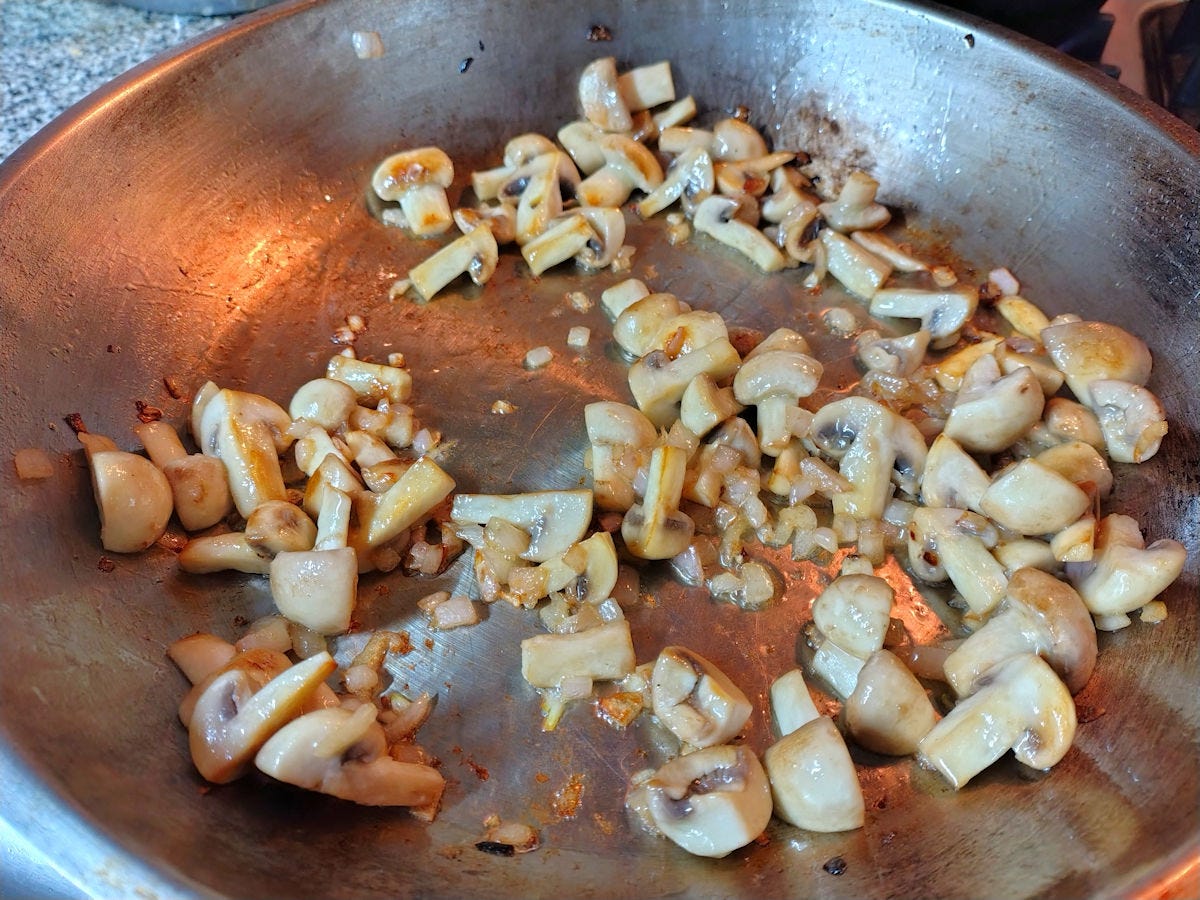
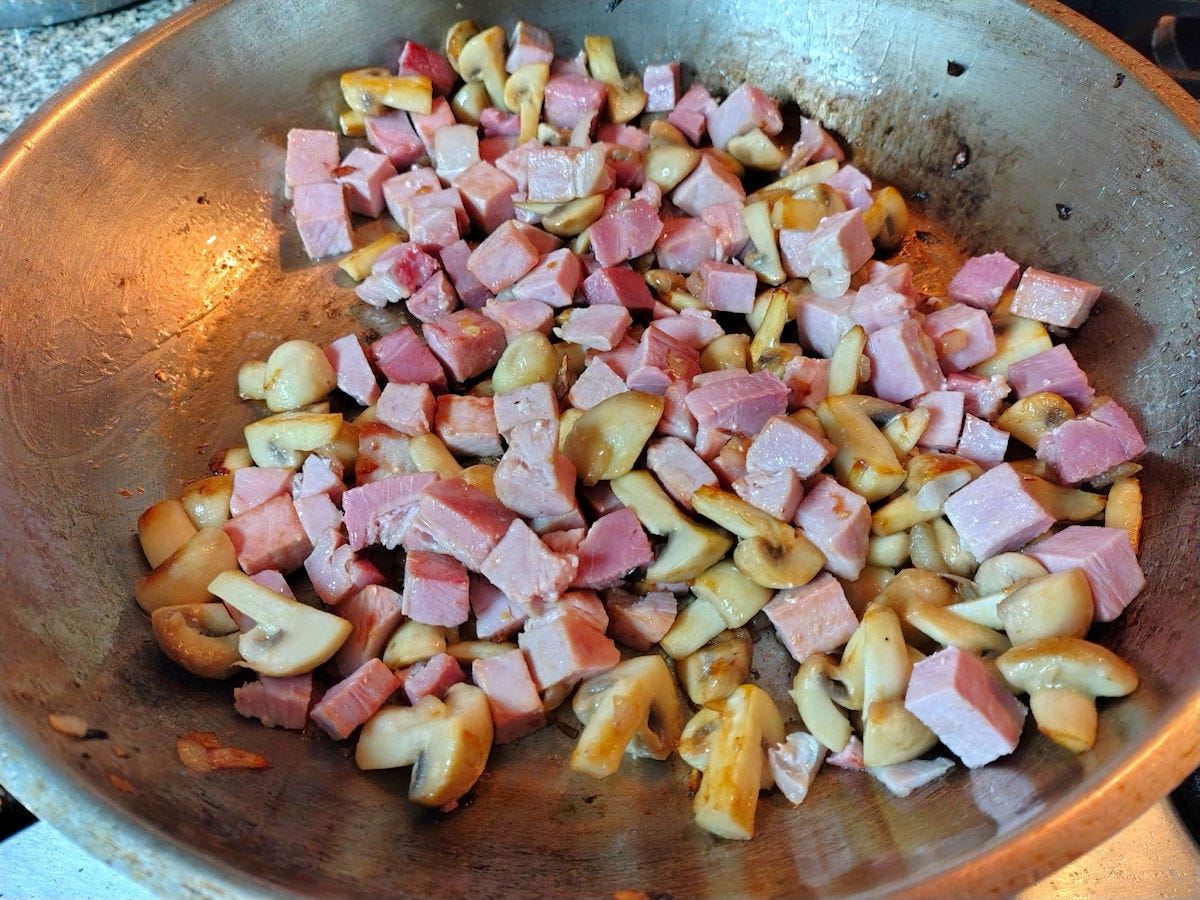
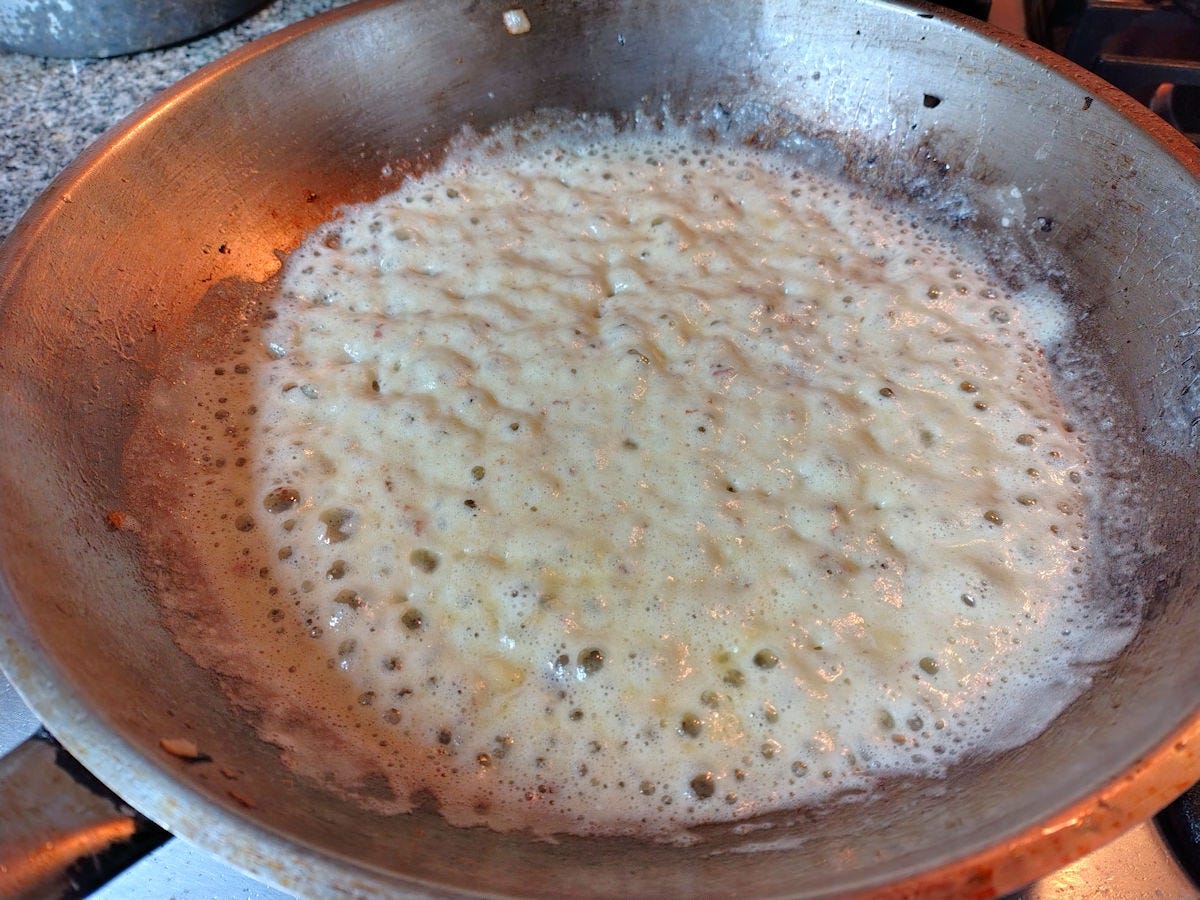
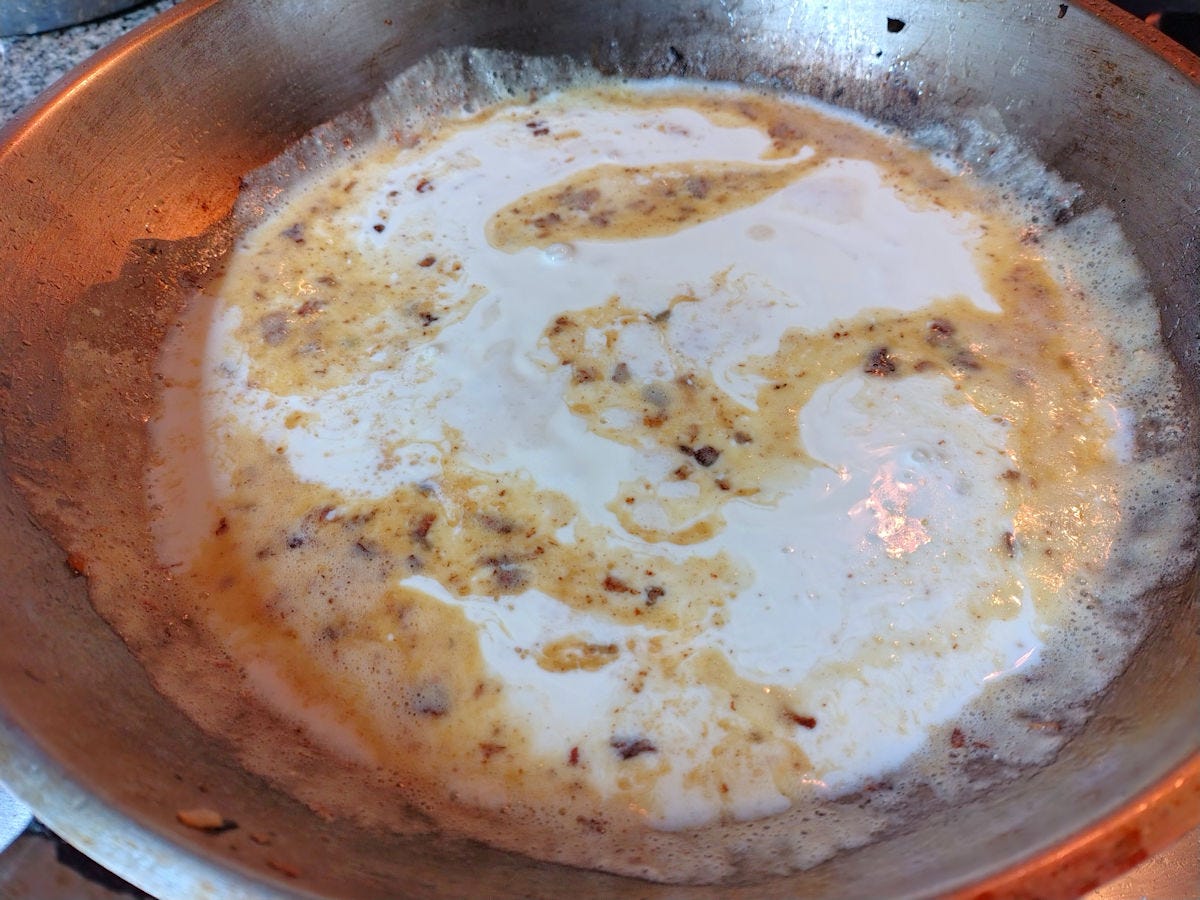


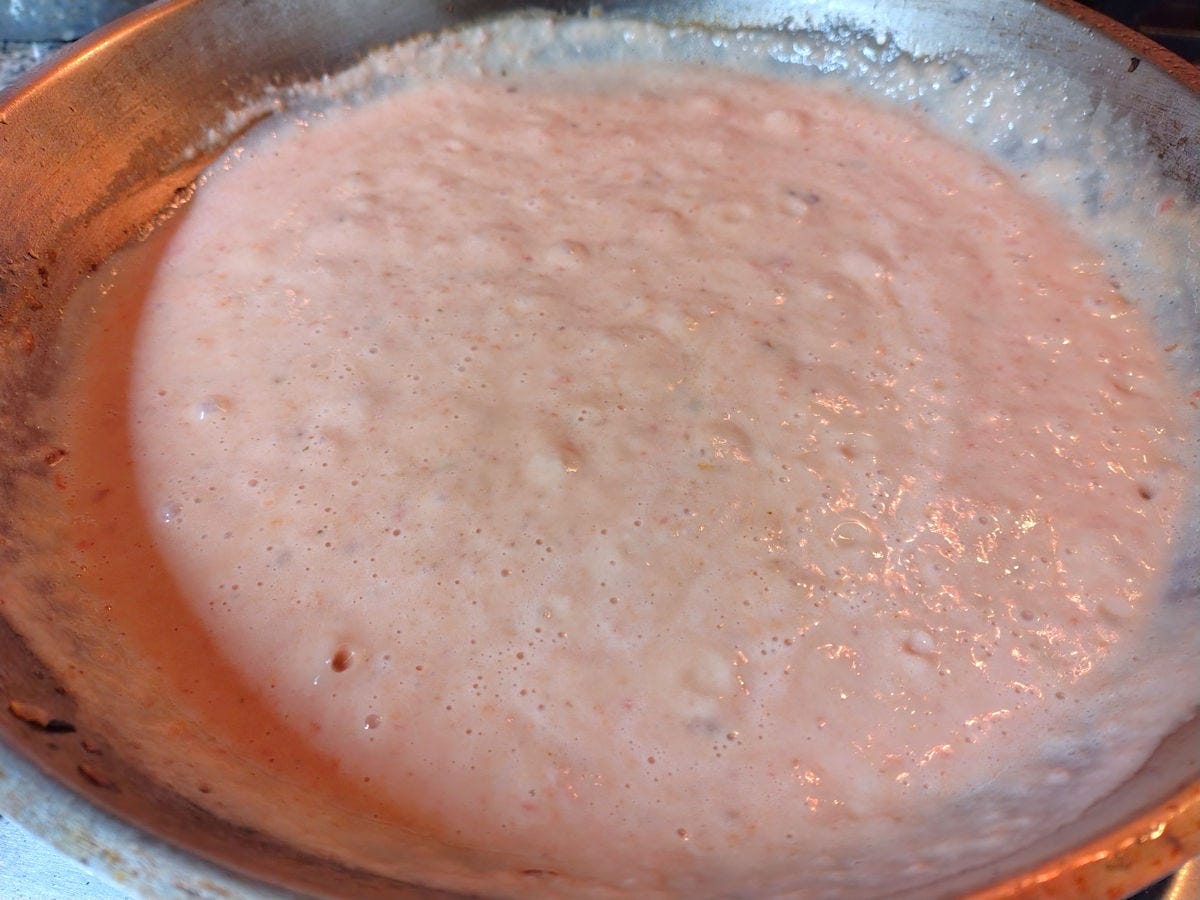
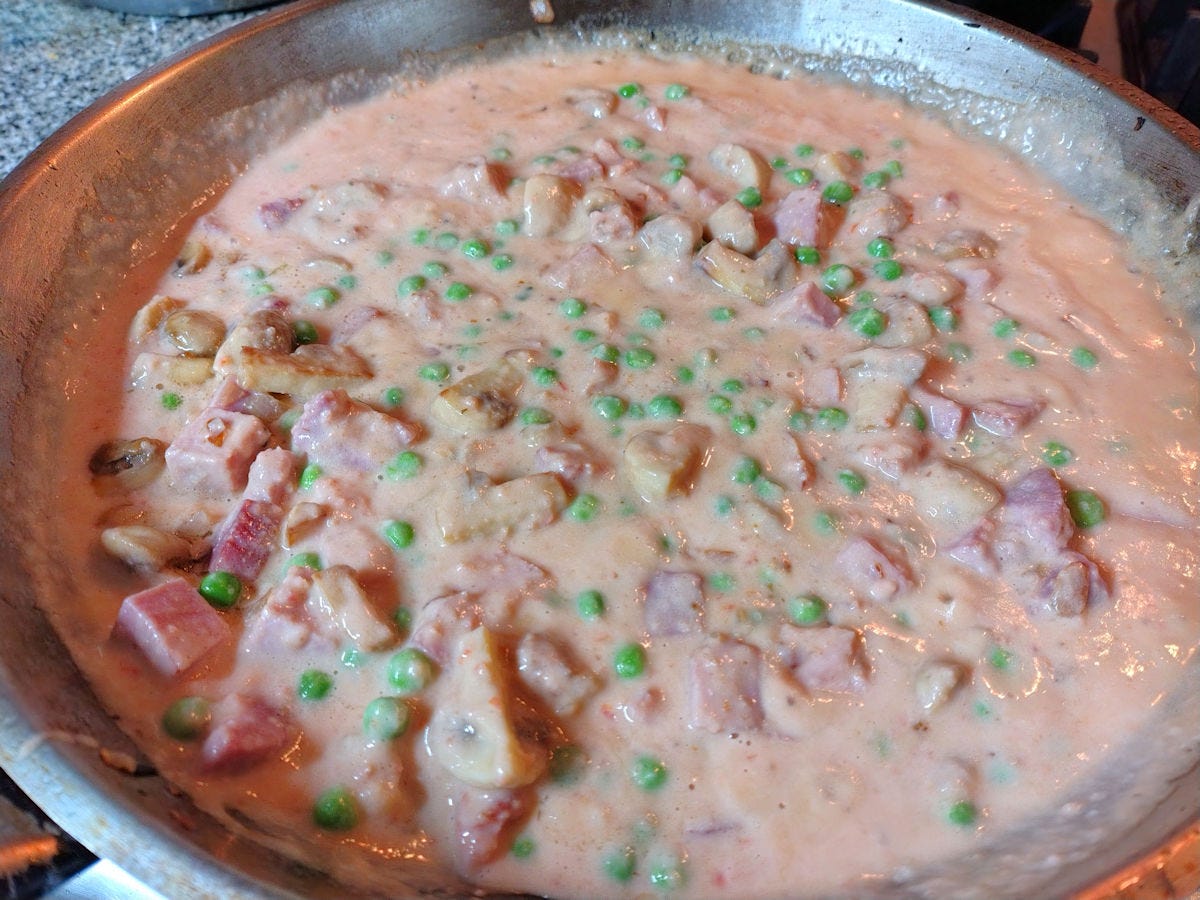
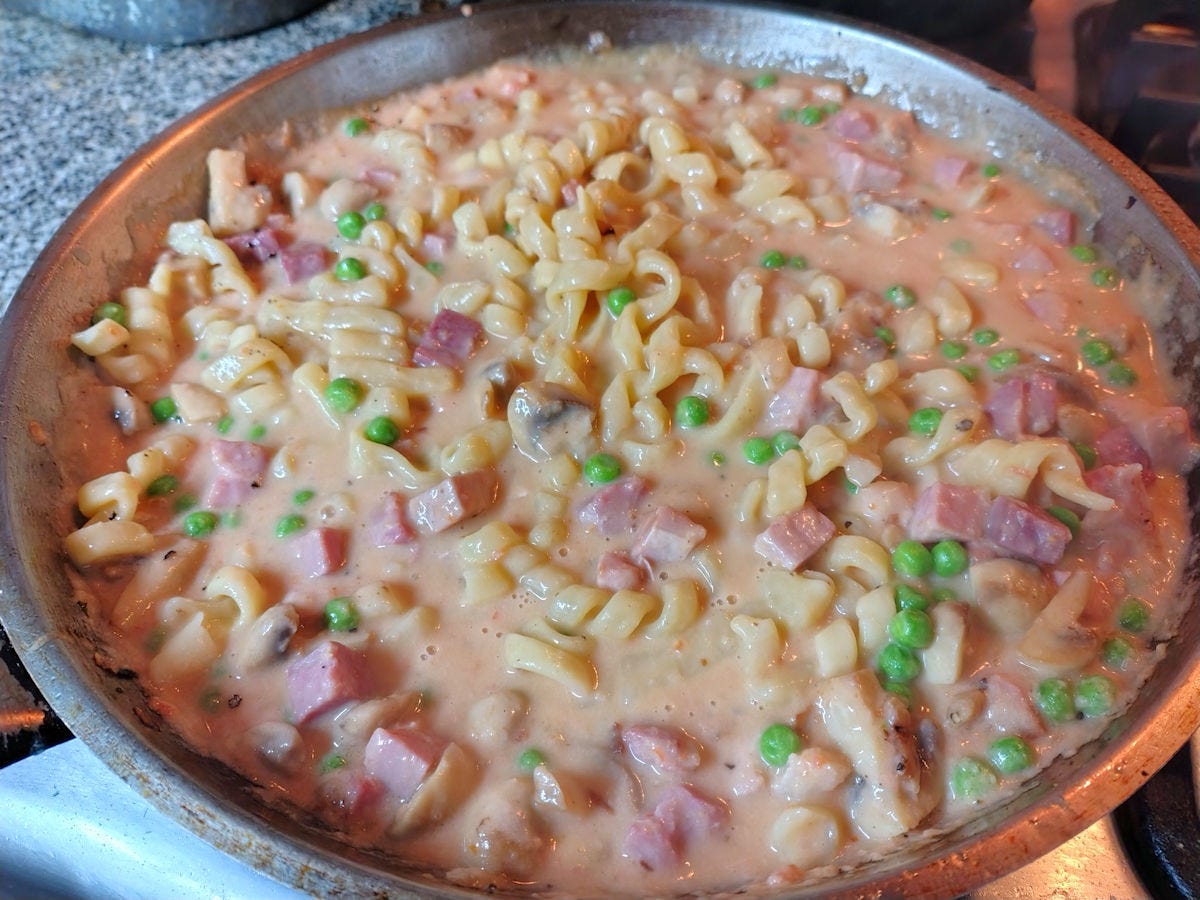
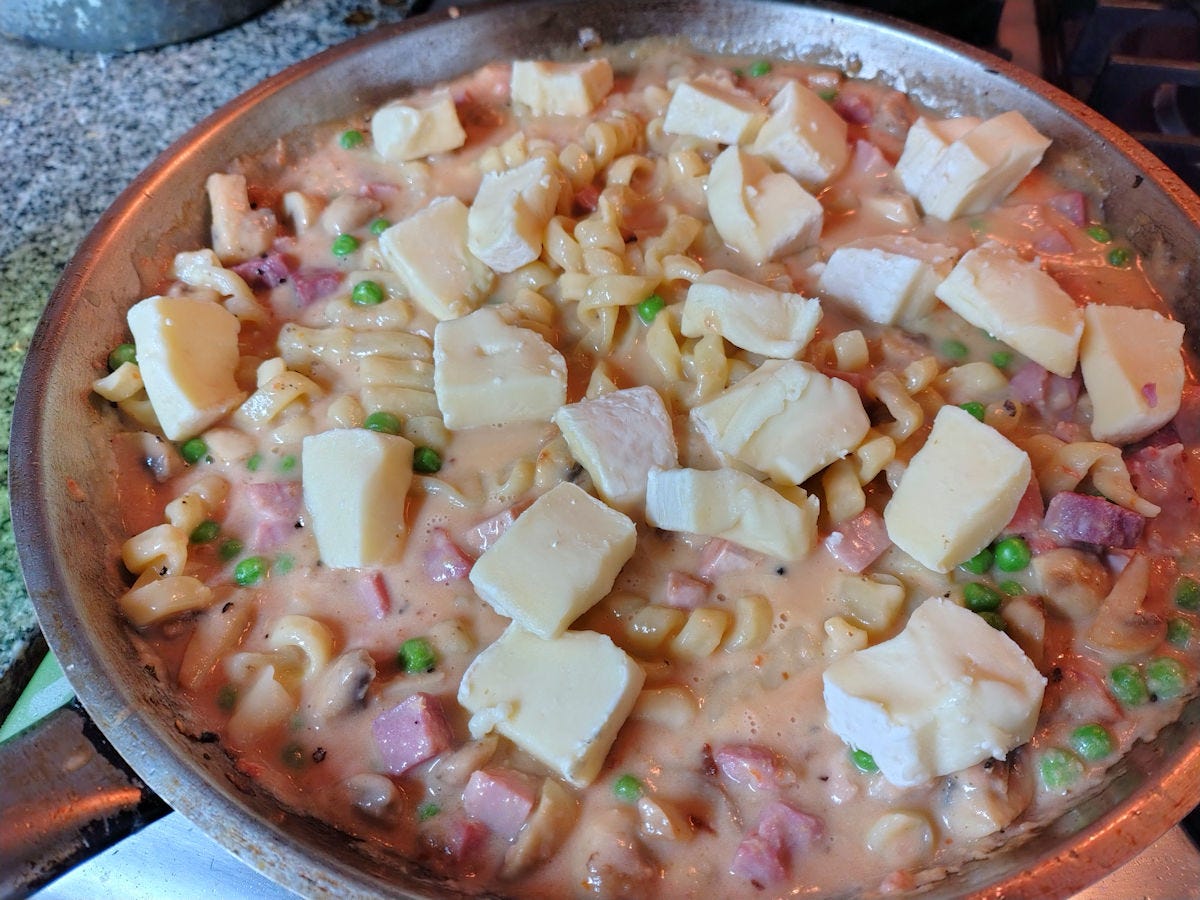
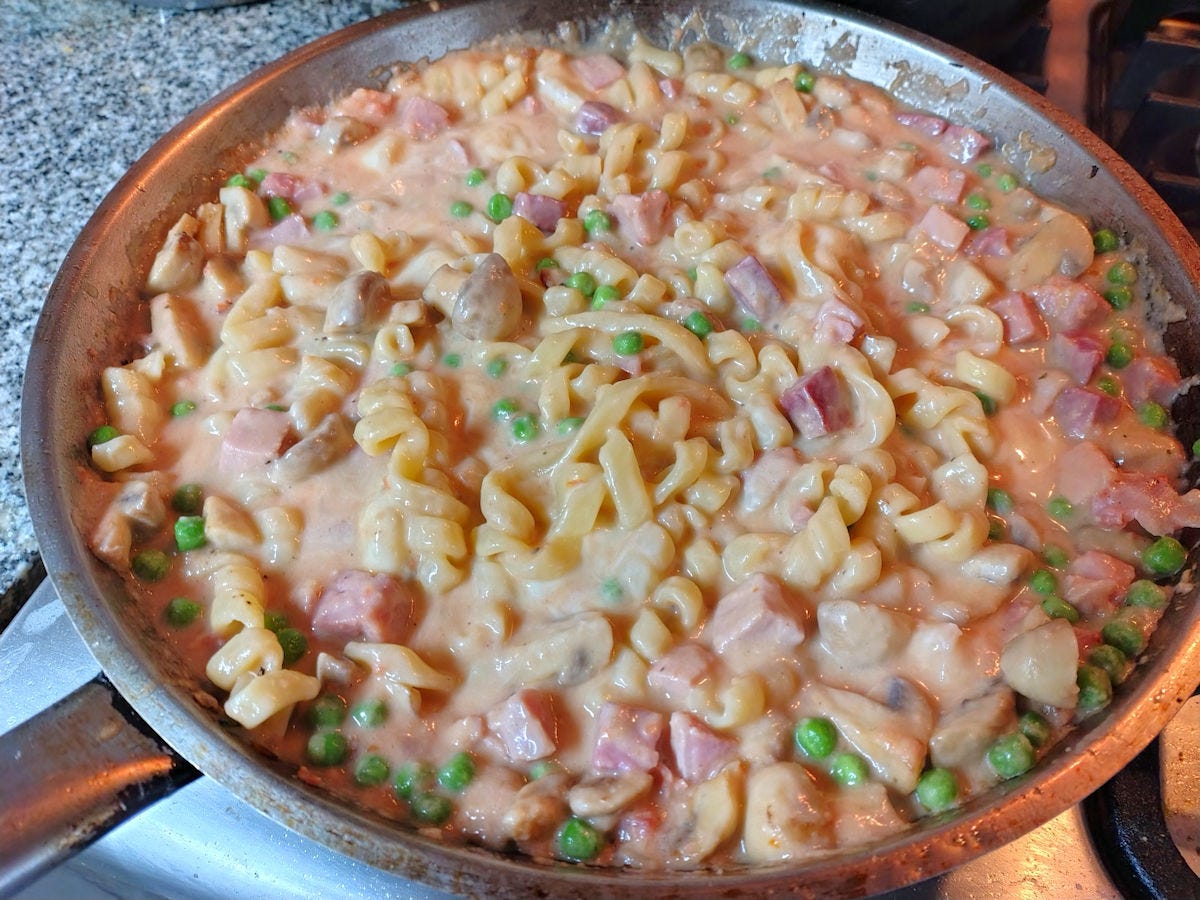
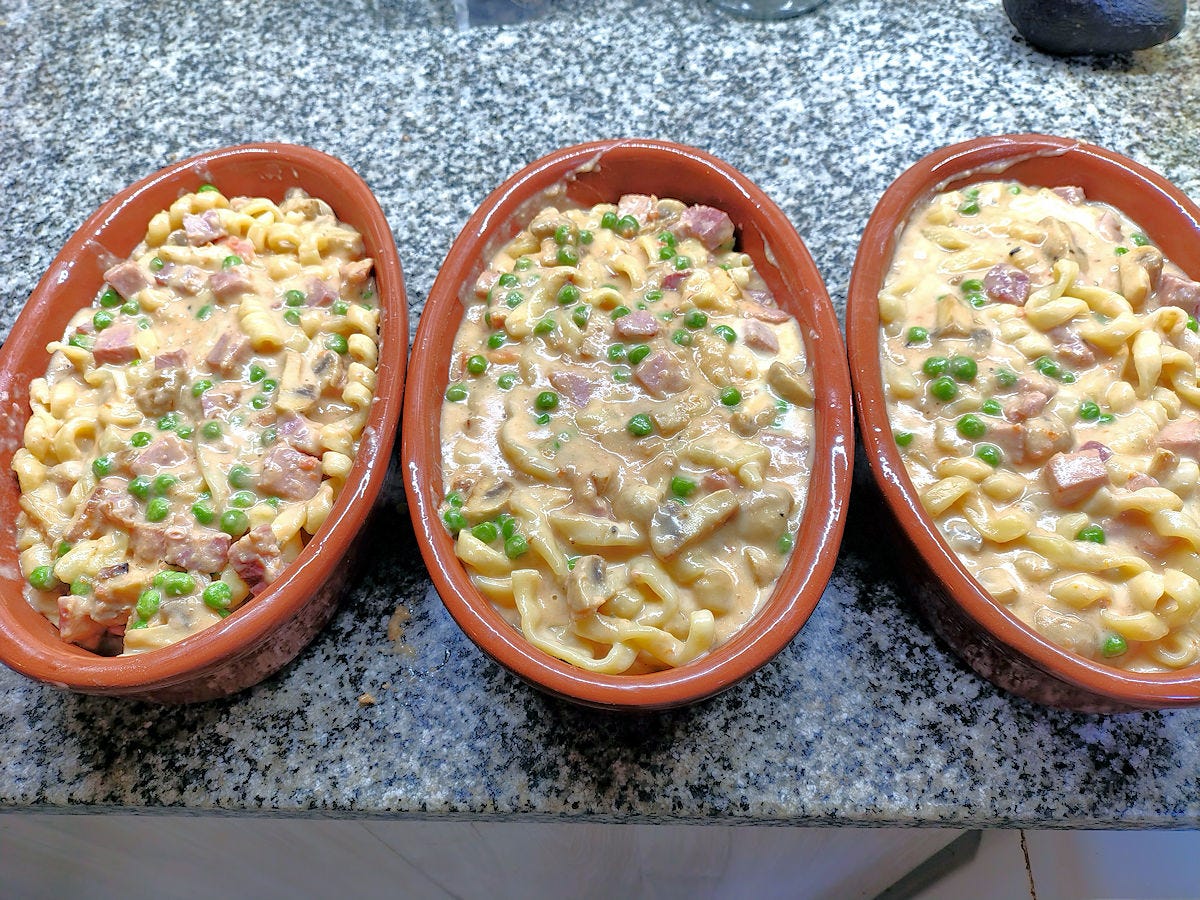
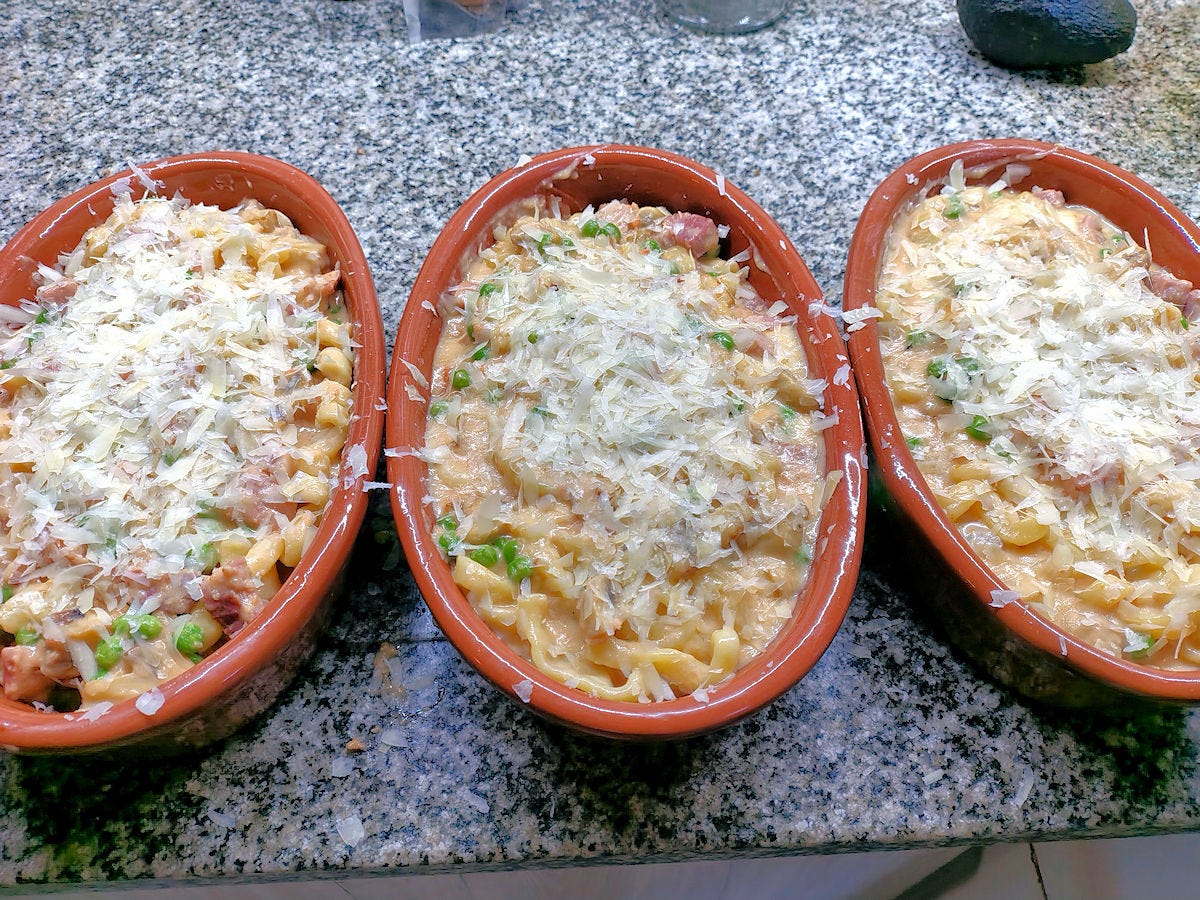
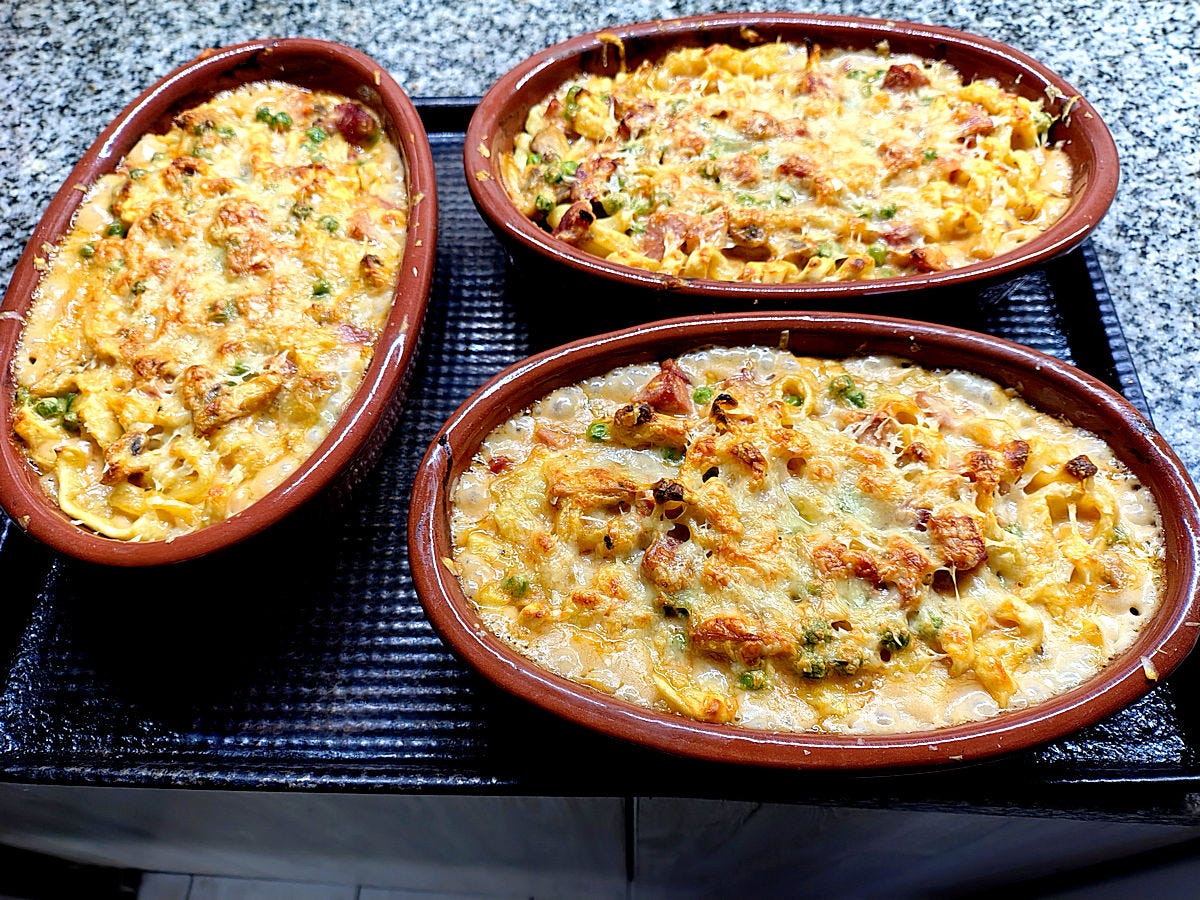
My cardiologist would freak out.